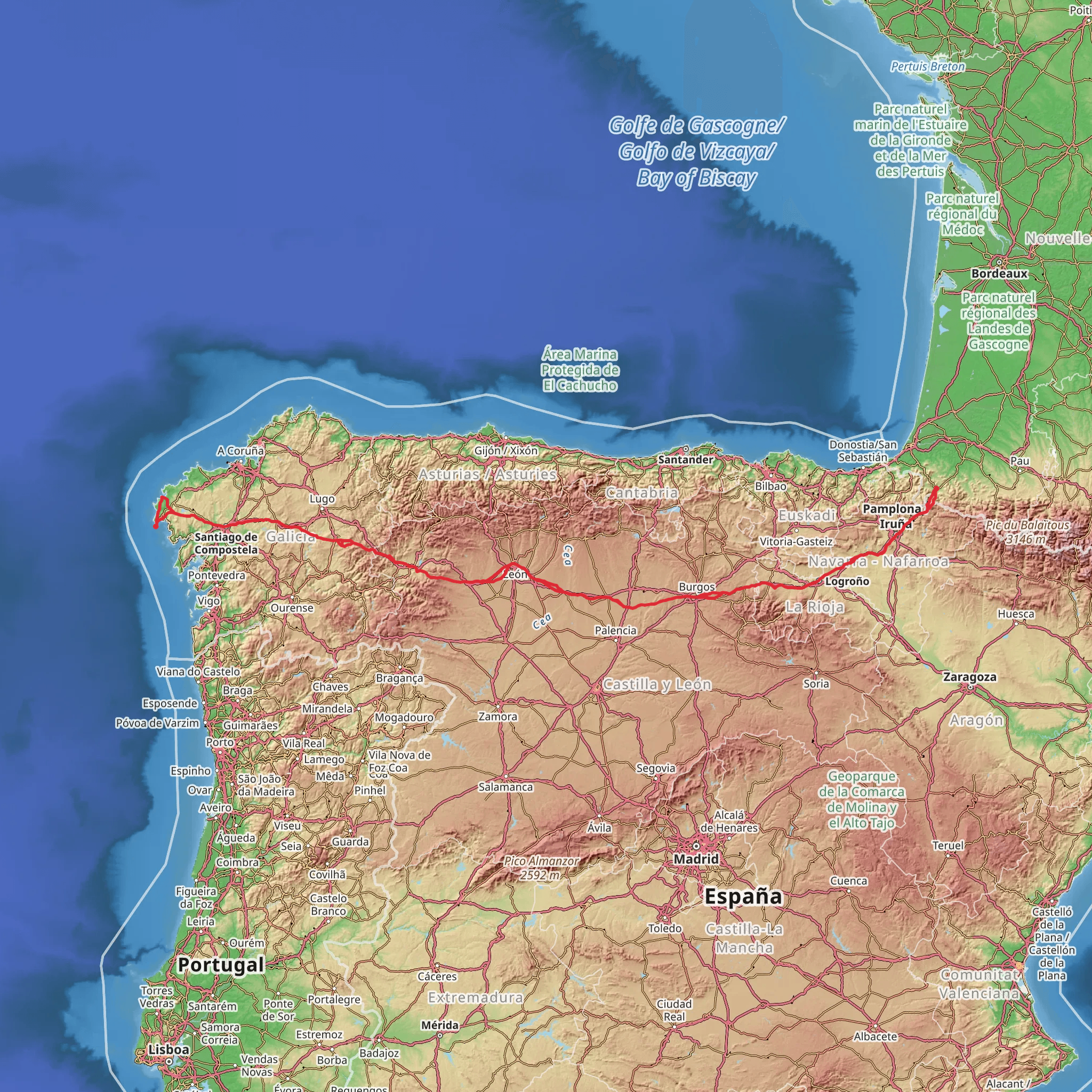Download
Preview
Add to list
More
863.3 km
~45 days
8960 m
Multi-Day
“Embark on a historic 863km pilgrimage, steeped in natural beauty and rich cultural tapestry.”
Embarking on the Camino de Santiago Francés, you'll traverse approximately 863 kilometers (536 miles) across the diverse landscapes of France and Spain, culminating in the historic city of Santiago de Compostela. With an elevation gain of around 8900 meters (29,200 feet), the journey begins near the quaint French town of Saint-Jean-Pied-de-Port, nestled in the Pyrenees.
Getting to the Trailhead
To reach the starting point, travelers can fly into Biarritz Airport in France and take a shuttle or local transport to Saint-Jean-Pied-de-Port. Alternatively, if arriving by train, Bayonne is the nearest major railway station, offering direct connections to Saint-Jean-Pied-de-Port. For those driving, parking is available in the town, though it's advisable to arrange long-term parking in advance due to the length of the hike.
The Journey Through History and Nature
As you set out from Saint-Jean-Pied-de-Port, the initial ascent over the Pyrenees is both challenging and rewarding, offering stunning views. This first section is about 25 kilometers (15.5 miles) and includes a steep climb to the Roncesvalles Pass, a significant historical site where Charlemagne's army suffered defeat in 778.
Continuing through the undulating landscapes of the Navarre and La Rioja regions, you'll encounter vineyards and monasteries, such as the Monastery of Santa María la Real in Nájera, which is a testament to the trail's religious and cultural significance.
Landmarks and Cultural Highlights
The Camino de Santiago Francés is dotted with numerous cathedrals, churches, and historic towns. One of the most notable is the Cathedral of Burgos, a UNESCO World Heritage Site, located roughly 180 kilometers (112 miles) from the start. Farther along, at about 369 kilometers (229 miles) from Saint-Jean-Pied-de-Port, you'll reach León, another city rich in history with its own stunning Gothic cathedral.
Flora and Fauna
The trail's diverse ecosystems host a variety of wildlife. In the Pyrenees, you might spot griffon vultures soaring above or Pyrenean chamois on distant slopes. As you descend into the meseta, the high central plateau of Spain, the landscape shifts to vast fields where you can observe birds of prey and the occasional Iberian hare.
Preparation and Navigation
Given the trail's length and varied terrain, it's essential to be well-prepared with appropriate gear and clothing. Weather can change rapidly, especially in the mountainous regions, so layers are crucial. For navigation, HiiKER is an invaluable tool, offering detailed maps and information on the trail, which is well-marked with the iconic yellow scallop shell and arrows.
Accommodation and Logistics
A network of hostels, known as albergues, provides lodging along the route. It's wise to plan your stages to know where you'll be stopping each night, as some areas have more limited options than others. Many albergues operate on a first-come, first-served basis, so starting your day early can be advantageous.
Concluding the Pilgrimage
As you approach the final stages, the Galician landscape offers lush greenery and a cooler climate. The last 100 kilometers (62 miles) from Sarria to Santiago are the busiest, as many pilgrims start their journey here to qualify for the Compostela, a certificate of completion.
Upon reaching Santiago de Compostela, the trail's end is marked by the grandiose Cathedral of Santiago, where the relics of Saint James are said to be held. Here, you can attend the Pilgrim's Mass, reflect on your journey, and celebrate the completion of this historic and transformative pilgrimage.
What to expect?
Activity types
Comments and Reviews
User comments, reviews and discussions about the Camino de Santiago Francés, France.
4.86
average rating out of 5
51 rating(s)

